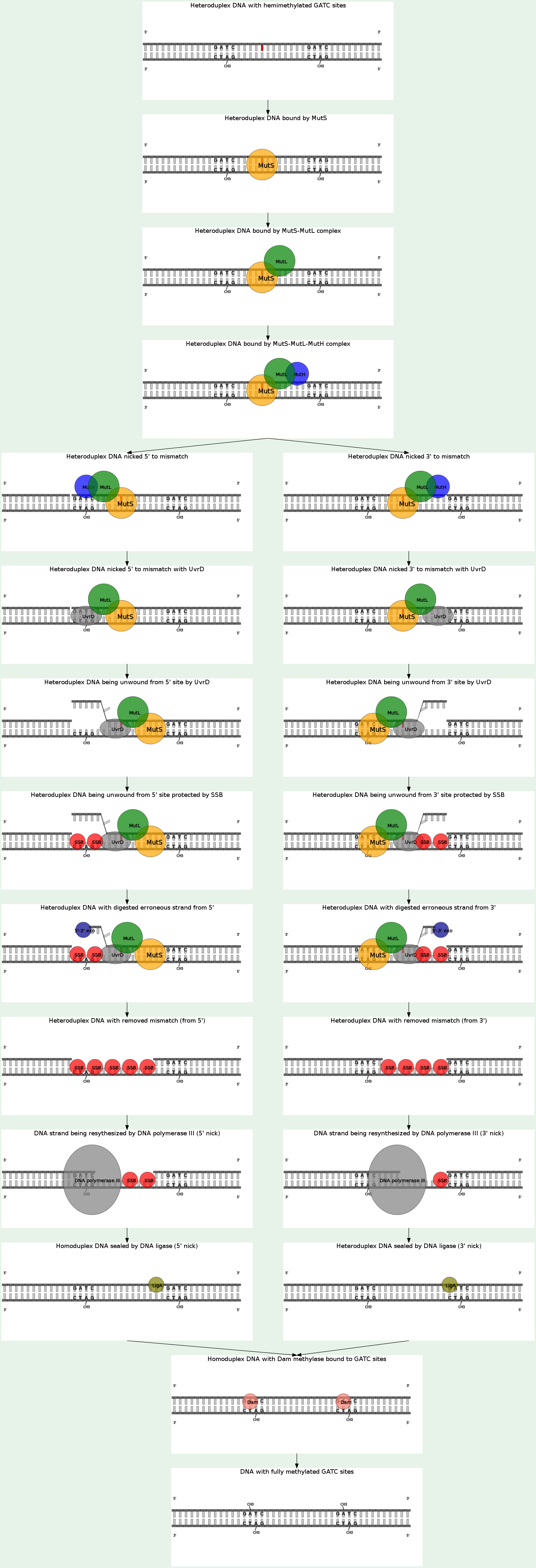Simplified MMR mechanism in humans.
DNA mismatch repair (MMR) is responsible for correction of replication errors (mismatches and small insertions and deletions) that escape the proofreading activity of a DNA polymerase. In E. coli, MMR is initiated by MutS, MutL, and MutH, while in eukaryotes, the process is initiated by two proteins homologous to MutS and MutL from E. coli, MutSalpha and MutLalpha. MutS homologs first recognize the error in DNA, and then physically interact with MutL, which next activates other proteins that remove the error-bearing DNA strand and synthesize the new one. Mutations in the genes coding human MutS and MutL homologs have been linked with the Lynch syndrome, which is characterized by an increased risk of developing cancer.
The listed activities and steps do not include:
- ATP/ADP exchange and hydrolysis cycles by MutS and MutL
- passive sliding of MutS-MutL complex from mismatch (there are alternative models explaining what happens after MutS binds mismatch and/or MutL such as "molecular switch model" (passive sliding), "active-translocation model", and "DNA bending model", in which MutS-MutL complex stays at the mismatch). Molecular switch model is most likely, but still speculative, thus not included.
|




